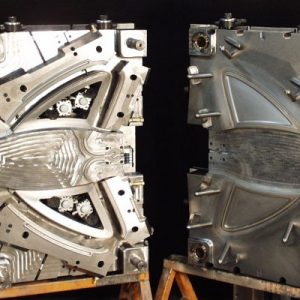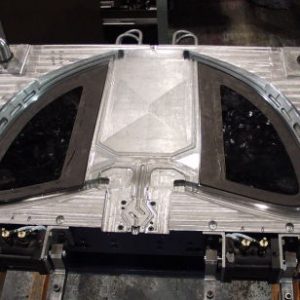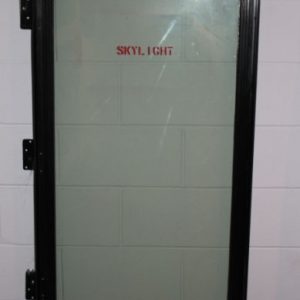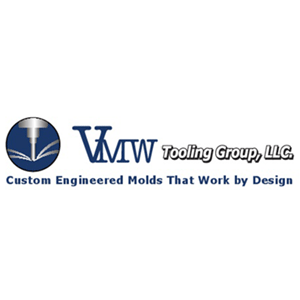Glass Encapsulation Tooling
Encapsulating glass is a core capability that VMW has been performing for over 20 years. We have a long history of bonding glass with encapsulation using a broad range of materials.
Glass encapsulation originated within the automotive field. Glass encapsulation originally had been primarily used by the automotive industry for increasing aesthetic and comfort by reducing noise, and points of entry by water and dirt. Glass encapsulation greatly enhances the end design appearance by utilizing a continuous smooth seal.
Industries using Glass Encapsulation
Recognizing the benefits of glass encapsulation, other industries like consumer goods, telecommunications, construction, medical and others have been utilizing glass encapsulation in their designs.
Glass encapsulation can be used everywhere glass needs to act as a protectant against elements or as insulation to keep objects at a constant temperature. For this reason, glass encapsulation is commonly used in consumer and commercial refrigeration and freezer equipment.
Commercial, residential and marine construction design projects also benefit from encapsulating glass sun roofs, fixed window, single pane, double hung, sliding glass, casement, roll out, awning, hopper and other window designs. The durability of encapsulation materials is a serious manufacturing consideration for designs that need to weather outdoor elements.
Glass encapsulation can bring an extra layer of quality to your product design. Prototypes to production can benefit. Because of the cost savings and quality benefits, OEM’s with low – short run projects as well as full blown production lines are finding this manufacturing method a solution.
Glass Encapsulation – Bonding
Bonding polyurethane material to glass is unlike encapsulation. Bonding material to glass utilizes adhesives and fasteners which add an extra step to the manufacturing process. Extra steps in the manufacturing process add to the overall product cost to manufacture.
Bonding is less secure than encapsulation because the adhesive material can be removed. Bonding material to glass also increases the chance that normal wear and tear will breakdown the bonding adhesive or remove the bonding material from the glass.
Because there is the potential for bonding adhesive breakdown, lessen the glass seal properties. For example, consumer product refrigeration and freezers need the best seal possible for long term consumer quality satisfaction.
How Glass Encapsulation Works
Glass encapsulation is achieved by injecting a polymer or plastic material on the glass rim inside the mold. Under normal conditions the end encapsulated glass product is very stable, and doesn’t bring harm to passengers and the environment. The end product design may contain hardware such as gaskets, fasteners, clips, etc.
Almost any glass design can be encapsulated. Glass encapsulation using a polyurethane material results in a superior gasket to glass seal. Encapsulating the glass without secondary process adhesives reduces components and installation time.
Encapsulation also provides improved function of the finished glass product. While improving aesthetics encapsulation also gives you the ability to combine complex profiles while reducing weight.
Glass – Metal – Housing Encapsulation Materials
- PVC
- Most RIM Materials
- Recticel Material
- Bayer Material
- Dow System Material
- And many More – contact Us
VMW’s Engineers can Help Your Design
Other benefits of the encapsulation process may expand styling options, and in some circumstances insert molding of structural components. VMW’s experienced engineers play a role in the advantages of our design. Our team of engineers will work with you designing products that must meet new criteria for long term trim warranties.
VMW also actively works with designers to eliminate potential processing issues that could cause quality concerns by creating the best design for encapsulation. VMW also works with independent project environmental concerns.




